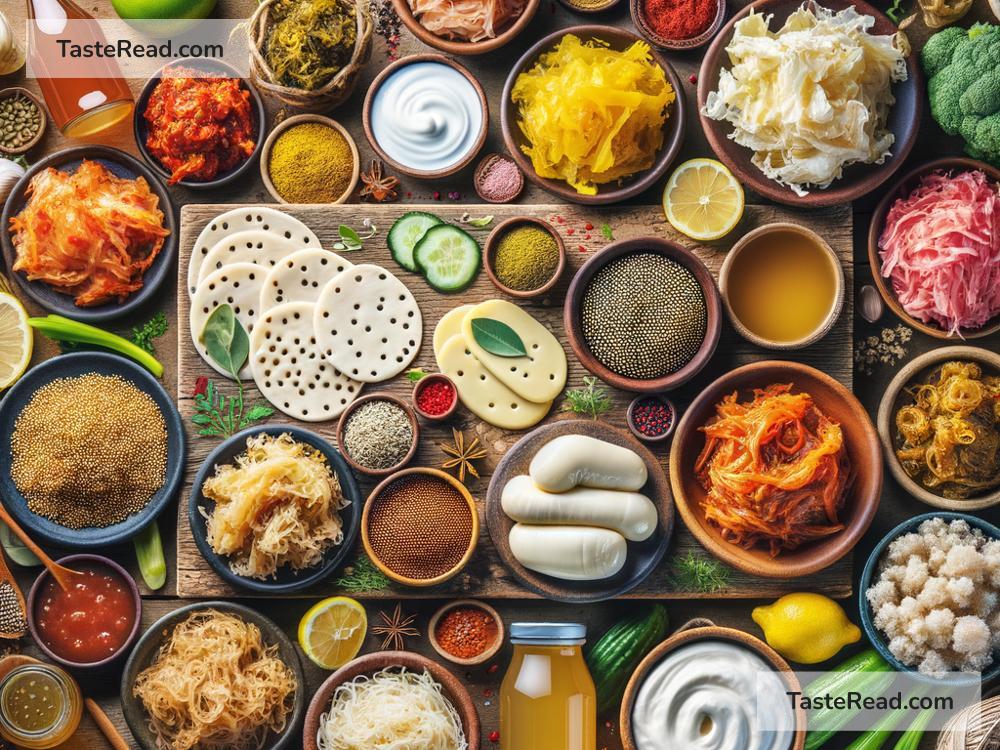Unique Fermented Foods from Around the World
When you think of fermented foods, you might picture yogurt, kombucha, or pickles. But did you know there’s a dizzying variety of fermented foods from every corner of the world? Fermentation is one of the oldest ways humans have preserved food, improved its taste, and made it easier to digest. Beyond their rich history, fermented foods are also packed with probiotics, which can help keep your gut healthy and boost your immune system.
Let’s take a flavorful journey and explore some unique fermented foods from different countries that you may never have heard of!
1. Natto (Japan)
Natto is a traditional Japanese food made from fermented soybeans. It has a sticky texture, strong smell, and a unique, almost cheesy flavor. For many people trying it for the first time, natto can be an acquired taste. But in Japan, it’s loved for its health benefits. Natto is rich in protein, vitamins, and a special enzyme called nattokinase, which is believed to help with heart health and blood circulation.
It’s often eaten for breakfast, served with rice, mustard, soy sauce, or even raw egg. If you’re feeling adventurous, give natto a try—it’s unlike anything else!
2. Kimchi (South Korea)
No conversation about fermented food is complete without mentioning kimchi. This spicy, tangy dish is South Korea’s national treasure and a staple on nearly every table. Kimchi is made from fermented cabbage and radishes, seasoned with chili peppers, garlic, ginger, and fish sauce. Its flavor can range from mildly spicy to fiery hot depending on the recipe.
Kimchi isn’t just delicious; it’s also incredibly healthy. It’s packed with vitamins, minerals, and probiotics. Fun fact: Koreans eat so much kimchi that they even have kimchi refrigerators to store it properly!
3. Sauerkraut (Germany)
Sauerkraut might look simple, but it’s one of Europe’s most iconic fermented foods. Made by fermenting cabbage with salt, sauerkraut has a tangy, sour taste and a crunchy texture. It pairs perfectly with sausages, sandwiches, and hearty stews.
This dish has been enjoyed in Europe for hundreds of years, even making its way onto ships to prevent sailors from getting scurvy. Today, sauerkraut is loved not only for its flavor but also for its probiotics, which are excellent for digestion.
4. Kefir (Central Asia and Eastern Europe)
Kefir is a fermented drink similar to yogurt but thinner and more tangy. It’s made by adding kefir grains—tiny clusters of bacteria and yeast—to milk. These grains ferment the milk, turning it into a probiotic-packed beverage.
Kefir is refreshing, nutritious, and often enjoyed plain or blended with fruits. Many people consider it to be a superfood because of its ability to boost immunity and improve gut health. While kefir originated in Central Asia, it’s now loved worldwide.
5. Tempeh (Indonesia)
Tempeh is a protein-rich fermented food made from soybeans. Unlike tofu, which is soft and pale, tempeh has a firmer texture and a nutty flavor. Its unique taste and versatility make it a popular meat replacement for vegetarians and vegans.
This Indonesian staple is made by fermenting soybeans into a solid cake using a mold. Tempeh can be grilled, stir-fried, or added to soups and curries. It’s not only packed with protein but also contains fiber and vitamins.
6. Kvass (Russia)
Kvass is a traditional Russian fermented drink made from rye bread. It’s mildly alcoholic, fizzy, and has a complex sour-and-sweet flavor. Historically, kvass was considered a drink for the common folk because it was simple and cheap to make. Today, it is enjoyed across Russia and other Eastern European countries.
While the classic version is bread-based, modern kvass recipes sometimes include fruits, berries, or honey for a fun twist.
7. Injera (Ethiopia)
Injera is Ethiopia’s famous flatbread with a twist—it’s fermented! Made from teff flour and water, the fermentation process gives injera its signature sour flavor and spongy texture. This large, round bread is both a staple dish and a utensil, as Ethiopians use it to scoop up stews and curries served on top.
The fermentation not only enhances the bread’s taste but also boosts its nutritional value, making injera rich in fiber and B vitamins.
8. Fermented Shark (Iceland)
Hákarl, or fermented shark, is one of Iceland’s most unusual foods—and possibly the most daring item on this list! It’s made by fermenting Greenland shark meat, then drying it for several months. The final product has a strong ammonia smell and an intense flavor.
For locals, hákarl is a traditional delicacy tied to Iceland’s history. For visitors, it’s often described as an unforgettable (and challenging) culinary experience.
9. Poi (Hawaii)
Poi is a traditional Hawaiian food made by fermenting taro root. After boiling the taro, it’s mashed into a smooth paste and left to ferment. The result is a tangy, slightly sour dish that’s often enjoyed as a side.
Poi is important to Hawaiian culture and is considered a comfort food by locals. It’s also easy to digest and packed with nutrients, making it ideal for babies and those with sensitive stomachs.
10. Dhokla (India)
Dhokla is a savory Indian snack made from fermented rice and chickpea flour. The batter is left to ferment to give the dish a soft, spongy texture and a mild tangy flavor. Steamed until fluffy, dhokla is often served with chutney or topped with mustard seeds and curry leaves.
This dish is particularly popular in the western Indian state of Gujarat and is enjoyed for breakfast or as an evening snack.
Final Thoughts
Fermentation is an art that transforms simple ingredients into extraordinary foods. Each culture has its own unique fermented dishes, shaped by history, geography, and tradition. These foods are not just tasty—they’re a celebration of human creativity and resourcefulness. So the next time you’re looking for something new to try, consider one of these fermented treasures. Who knows? You might discover your next favorite dish!


